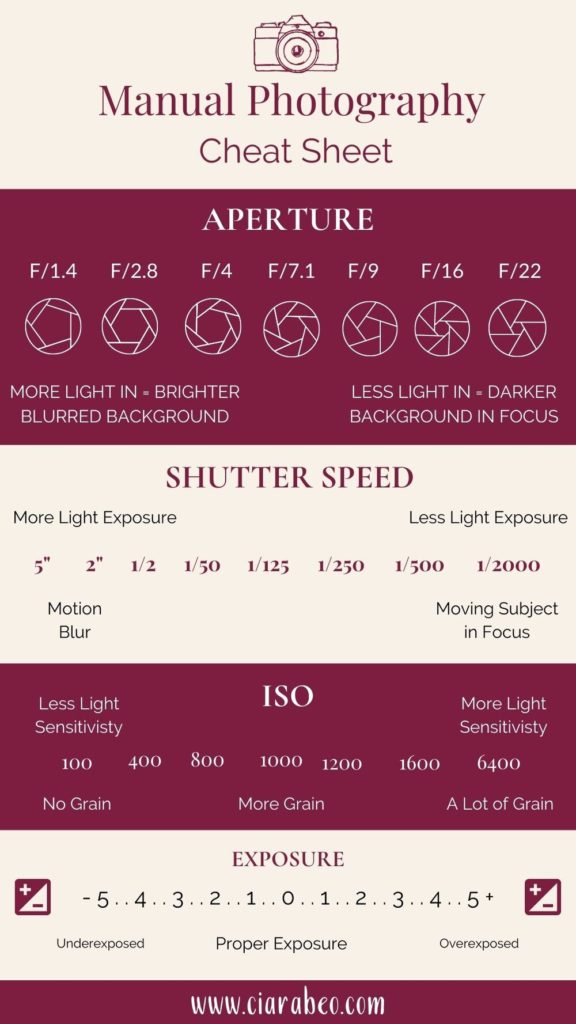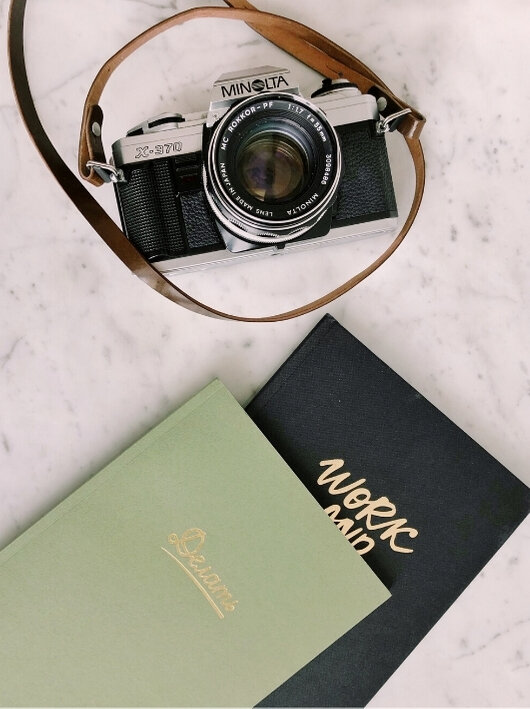HOW TO SHOOT PHOTOS IN MANUAL MODE LIKE A PROFESSIONAL PHOTOGRAPHER
Understanding and mastering manual mode is the trademark of a good photographer. In my opinion, the knowledge of the camera is always more important than the camera gear itself. First things first, there is a difference between manual mode and manual focus. Generally, when people say you should be shooting in manual they are referring to manual mode, not necessarily manual focus. All you need to learn an understand manual mode is a camera with a manual mode function.
WHAT IS MANUAL MODE?
Manual Mode gives the most control over the camera’s settings. The three essential settings when understanding manual photography are shutter speed, aperture, and ISO. These three settings work together to set the exposure triangle.
Long story short, understanding manual mode and how to use your camera in different situations is important to get the shot!
WHAT’S THE DIFFERENCE BETWEEN WITH SHOOTING IN MANUAL MODE VS AUTO?
In auto mode, you are giving up control of the image settings. It’s completely up to the camera to set the settings and determining exposure. So let’s say you are trying to capture your dog running around your yard, your dog is running fast so you would want a fast shutter speed (like 1/1000) to get the dog in focus.
WHAT IS EXPOSURE?
Exposure is the amount of light that reaches your camera sensor. This determines how bright or dark your image appears. Most digital cameras and some film cameras will display the exposure level on a light meter.
UNDERSTANDING THE LIGHT METER
Your light meter shows your exposure in brackets. When the light meter is at 0 this means your image is properly exposed between the highlights and the shadows. You should aim for 0 being the “sweet spot” of exposure.
Editing Tip: If necessary, I underexpose my images slightly in camera to -0.3 or -.0.7 depending on the lighting situation.

WHAT IS SHUTTER SPEED?
Shutter Speed is the length of time the shutter remains open and exposes light to the camera sensor.
The longer the shutter speed, the more light is being exposed to the sensor and motion is blurred.
The Tripod Rule: Generally, if the shutter speed is set to anything longer than the focal length of your camera so 1/50 for a 50mm lens or 1/80 for an 85mm lens it is recommended to use a tripod because the natural hand movement when shooting handheld will cause a blurry image at longer shutter speeds.
WHAT IS APERTURE?
Aperture is the size of the opening in the lens which causes light to reach the sensor. The F stop is the number that signals how shallow or deep the depth of field is. The smaller the number, the larger the opening of the lens.
WHAT IS THE “F STOP”?
F Stop is determined by the lens type and structure. For example, a 35mm f/1.4 lens opens all the way down to 1.4. Whereas a 35mm f/4 lens lets in a lot less light because the opening is smaller. Both are 35mm lenses but they have different minimum apertures. The F stop determines the depth of field in the image.
WHAT IS DEPTH OF FIELD?
The depth of field is the level of focus of the background (not the subject) of the image. So if you want a blurred background but maintain your subject in focus, a smaller aperture is necessary. A larger aperture (like f/1.4 or f/2.8) will give you a shallow depth of field meaning a small area is in focus. A smaller aperture (like f/11 or f/16) will give you a deep depth of field and have a large area of the image in focus.
WHAT IS ISO?
ISO is the camera sensor’s sensitivity to light. The higher the ISO the more sensitive the camera sensor is to light and the brighter the image. The ISO range is determined by the camera body. The higher the ISO number the more “noise” or grain in the image.
100 ISO for bright sunny days
400 ISO for cloudy days or well lit indoor settings
800 ISO for low light settings or dusk
1200 – 1600+ for extreme low light
Some camera bodies have ISO settings up to 6400 – 128,000. I typically stay away from super high ISO because of the deteriorated quality and grain in the image but some situations may call for extremely high ISO like astrophotography.
So, Understanding these building blocks will have you capturing photos just like the professionals do!
You Also Might Enjoy:
